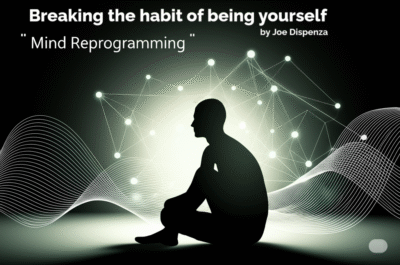Every moment offers an invitation. Daily mindfulness empowers you to embrace the present, sharpen your focus, and cultivate calm amid life’s demands. In this guide, you will discover how to build a sustainable mindfulness practice—step by step, grounded in research, yet accessible to everyone.
Start by asking yourself: What small shift can I make right now to notice my breath? As you read on, you’ll find clear instructions, real-life examples, and simple practices that fit any schedule.
Table of contents
- 1. Why Practice Daily mindfulness?
- 3. Core Techniques: How to Anchor Your Attention
- 4. Integrating Daily Mmindfulness into Tasks
- 5. Overcoming Common Challenges
- 6. Tracking Progress with Data
- 7. How Can You Deepen Daily mindfulness?
- 8. What Are Mindful Communication Techniques?
- 9. How Do You Use Reflection Journaling?
- 10. How Can You Adapt Daily mindfulness to Challenges?
- 11. How Do You Build a Long-Term Mindfulness Plan?
- 12. Conclusion: Carrying Daily mindfulness Forward
- References
1. Why Practice Daily mindfulness?
1.1 Understand the Benefits
Mindfulness reduces stress, enhances concentration, and boosts emotional balance. Studies show that spending just 10 minutes of genuine awareness daily can lower cortisol levels by up to 30%, improve sleep quality, and strengthen decision-making. Therefore, you’ll feel calmer and more grounded—even in high-pressure moments.
1.2 Avoiding the Myths
Many believe mindfulness demands hours of silent meditation, but that misconception discourages beginners. Instead, integrate micro-practices—only 1 to 3 minutes—during routine tasks: washing your hands, waiting in line, or listening to a friend. Consequently, you build resilience without overhauling your schedule.
2. Setting the Stage for Daily mindfulness
2.1 Create a Dedicated Space
- Choose a quiet corner, free from distractions.
- Place a small cushion, scented candle, or plant.
- Commit to returning here daily—even for just a moment.
2.2 Establish a Simple Ritual
Before each practice, pause and set an intention: “I practice Daily mindfulness to stay present.” This short ceremony signals your mind to shift from doing to observing.
2.3 Track Your Habits
Use a habit tracker or journal. Each evening, note: “I completed ___ minutes of mindful pause.” Over weeks, this record motivates you and reveals patterns—perhaps you’re more alert in the morning or find midday breaks most restorative.
3. Core Techniques: How to Anchor Your Attention
3.1 Breath Awareness
- Position yourself comfortably—sitting or standing.
- Gently close your eyes or soften your gaze.
- Observe the natural flow of your breath—no forcing.
- Count each inhale-exhale cycle up to five, then start over.
Although simple, this practice resets wandering thoughts. If your mind drifts, note “thinking” and return to the breath.
3.2 Body Scan
- Scan from toes to crown, feeling sensations—warmth, tension, tingling.
- Hold gentle curiosity: “What do I notice here?”
- Release any tightness by exhaling fully.
This method heightens body-mind connection and uncovers stress stores you may ignore in daily life.
3.3 Sensory Check-In
Ask yourself: “What do I hear right now? What smells? What textures touch my skin?” By naming each sense, you ground attention in the present.
4. Integrating Daily Mmindfulness into Tasks
4.1 Mindful Morning Routine
• While brushing your teeth, notice the bristles, the taste of toothpaste.
• During your shower, feel water temperature, the sound of droplets.
By turning automatic actions into chances for mindfulness, you cultivate consistency.
4.2 Mindful Eating
- Set your utensils down between bites.
- Chew slowly, savoring flavors and textures.
- Notice hunger cues and fullness.
As a result, you improve digestion, curb overeating, and deepen enjoyment of food.
4.3 Mindful Movement
Whether walking to your car or stretching at your desk, sync movement with breath: inhale as you step or extend, exhale as you land or release. This approach transforms ordinary motion into an anchoring practice.
5. Overcoming Common Challenges
5.1 Restlessness and Impatience
You may feel restless when you first sit quietly. Solution: Start with just 30 seconds of breath focus, then gradually extend.
5.2 Forgetting to Practice
If you often skip sessions, attach mindfulness to existing routines—after opening email, take three mindful breaths.
5.3 Judging Your Experience
When you label your practice “good” or “bad,” you create tension. Instead, treat each session as data: “Today, I noticed tension in my shoulders.” This neutral stance fosters self-compassion.
6. Tracking Progress with Data
Below is an illustrative table summarizing common markers of change over a 30-day period of Daily mindfulness.
| Marker | Day 1 | Day 15 | Day 30 |
|---|---|---|---|
| Average Stress Rating (1-10) | 7 | 5 | 3 |
| Focus Duration (minutes) | 2 | 5 | 10 |
| Mood Stability (% days calm) | 40% | 60% | 80% |
This example shows notable gains in focus and mood regulation. By charting your own data, you maintain motivation and witness real progress.
7. How Can You Deepen Daily mindfulness?
7.1 Cultivate Nonjudgmental Observation
- Notice thoughts as “mental events” rather than facts.
- Label them gently: “planning,” “worrying,” “remembering.”
- Return to your anchor (breath or body) without criticism.
By separating “you” from the content of your mind, you reduce reactivity.
7.2 Introduce Loving-Kindness Micro-Practice
- After your breath awareness, silently repeat phrases like, “May I be well,” “May I be safe.”
- Expand to others: “May you be well.”
This brief extension fosters compassion, softening stress patterns and supporting empathy in daily interactions.
7.3 Explore “Open Awareness”
- Instead of focusing on one anchor, broaden your attention to all inner and outer experiences.
- Notice sounds, bodily sensations, thoughts, and emotions equally.
With time, open awareness cultivates a panoramic presence—grounding you even when your schedule demands multitasking.
8. What Are Mindful Communication Techniques?
8.1 Active Listening
- Face your conversational partner with an open posture.
- Pause before replying—count three breaths if needed.
- Paraphrase: “I hear that you feel…”
Consequently, you validate others and reduce misunderstandings.
8.2 Speak with Clarity and Kindness
- Choose simple, honest words.
- Check your tone—aim for calm rather than hurried.
- Observe your intention: are you sharing information or seeking connection?
By aligning speech with mindful intent, you build trust and improve collaboration.
8.3 Manage Digital Dialogues
- Before sending a message, pause and breathe.
- Re-read for tone and purpose.
- Delay responses if you feel reactive—return when calm.
This practice prevents online misunderstandings and preserves your inner equilibrium.
9. How Do You Use Reflection Journaling?
9.1 Set Up Structured Prompts
Each evening, answer two or three concise prompts:
- “What moment today felt most alive?”
- “When did I lose presence, and why?”
- “What am I grateful for right now?”
Such targeted questions guide your mind toward insight, rather than aimless writing.
9.2 Review Patterns Weekly
- Highlight recurring stressors or breakthroughs.
- Adjust your micro-practices: if breath checks feel too brief, extend them.
- Celebrate small wins (more calm minutes, kinder responses).
By reflecting systematically, you fine-tune your Daily mindfulness plan to suit your evolving needs.
10. How Can You Adapt Daily mindfulness to Challenges?
10.1 In Stressful Environments
- Use a single breath as your reset—inhale count 4, exhale count 6.
- Anchor to a physical cue (e.g., touching your ring or watch).
- Mentally recite your intention: “I remain present.”
This micro-pause interrupts tension cycles, allowing you to respond thoughtfully.
10.2 When Emotional Triggers Arise
- Notice the body’s signals: tight chest, rapid heartbeat.
- Breathe into the sensation, softening the intensity.
- Name the emotion: “This is anger.”
Labeling emotions reduces their grip and prevents impulsive reactions.
10.3 Facing Technology Disruptions
- Schedule screen-free intervals—start with one 5-minute block after every hour online.
- Practice mindful walking or stretching during breaks.
By consciously unplugging, you preserve mental clarity and reinforce presence even in a plugged-in world.
11. How Do You Build a Long-Term Mindfulness Plan?
11.1 Define Your Intentions
Choose 1–3 clear goals:
- “I will practice breath awareness each morning.”
- “I will journal three times weekly.”
- Write them on an index card and place it where you’ll see it daily.
11.2 Create a Weekly Template
| Day | Practice | Duration |
|---|---|---|
| Monday | Breath anchoring + loving-kindness | 5 minutes |
| Wednesday | Body scan + sensory check-in | 7 minutes |
| Friday | Open awareness during daily chores | Continuous |
| Weekend | Reflection journaling + plan review | 15 minutes |
With this structure, you ensure variety and consistency without overwhelm.
11.3 Seek Community Support
• Join a local or online mindful-awareness group for accountability.
• Share insights and challenges—listening to others fuels motivation.
Community practice not only sustains commitment but also enriches your perspective.
12. Conclusion: Carrying Daily mindfulness Forward
As you’ve learned, Daily mindfulness is not a passive reading exercise—it’s a living process. By weaving micro-practices into your routines, deepening observation, refining communication, and reflecting with intention, you transform fleeting moments into lasting presence.
Consider these final questions: What single mindful pause could shift your next meeting? How might a brief gratitude note reshape your evening?
Start now—pause, notice, and breathe. Your journey toward clearer focus, calmer emotions, and deeper connection awaits.
References
- Meditation programs for psychological stress and well-being: a systematic review and meta-analysis by Manisha Goyal et al. (2014):
https://jamanetwork.com/journals/jamainternalmedicine/fullarticle/1809754 - Mindfulness-based therapy: a comprehensive meta-analysis by Bassam Khoury et al. (2015):
https://www.sciencedirect.com/science/article/abs/pii/S0272735814001332 - How does mindfulness training affect health? A mindfulness stress buffering account by J. David Creswell & Elizabeth K. Lindsay (2014):
https://journals.sagepub.com/doi/10.1177/0963721414547415 - Mindfulness meditation: In depth by National Center for Complementary and Integrative Health (2020):
https://www.nccih.nih.gov/health/mindfulness-meditation-in-depth - Mindfulness meditation: A research-proven way to reduce stress by American Psychological Association (2019):
https://www.apa.org/monitor/2012/07-08/ce-corner





















